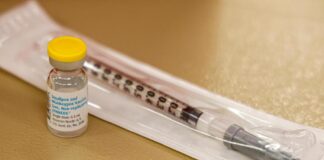/GettyImages-1281648331-40976ae1cdcb44da9889f92497adb18f.jpg)
Human immunodeficiency virus (HIV) is a highly infectious virus that attacks the body’s immune system. Black Americans have been disproportionately impacted by HIV since the start of the HIV/AIDS epidemic, and that disparity has continued despite numerous public health efforts.
Research shows that Black men, especially those who report male-to-male sexual contact, are more likely than any other group to be affected by HIV in the United States. Approximately 25% of all new HIV infections are among Black men who identify as gay or bisexual. Research shows that a staggering 1 in 16 Black men will be diagnosed with HIV in their lifetime.
This disease has destroyed Black communities, but recent data show some encouraging signs. This article will discuss why HIV rates are so high among Black men, prevention efforts, and ways to find care.
LumiNola / E+/ Getty Images
HIV in the Black Community
Black Americans have been hit harder by HIV than any other racial or ethnic group in the United States. The death rate for Black Americans with HIV/AIDS is nearly twice the rate of White and Latino Americans.
This racial disparity has continued for decades. Of the 1.1 million people living with HIV/AIDS in the United States, 476,100 are Black. And despite representing only 13% of the U.S. population, as of 2019, Black Americans make up 42.1% of new HIV cases and 44% of HIV-related deaths.
This pattern has persisted due to social inequities (unfairness) in income status, education, access to medical care, and other factors—not because the virus specifically targets Black people.
The devastating impact of HIV on Black communities reflects the social inequities and disadvantages stemming from centuries of racial oppression, civil and human rights violations, and structural racism.
Same-Sex Partners
HIV rates are higher in the LGBTQ+ (lesbian, gay, bisexual, transgender, questioning, and others) community compared to the heterosexual community and are highest among Black men. Black gay men have the highest risk for HIV compared with all other groups, accounting for 26% of infections.
Black men who identify as gay, bisexual, and other men who report male-to-male sexual contact also account for 37% of new diagnoses among all gay and bisexual men. Many more are likely affected but unaware of it.
HIV disparities in LGBTQ+ Black men are heightened by inequalities in access to medical care, as well as social stigma (negative attitudes).
As in many communities of color, homophobia and discrimination are significant factors that keep LGBTQ+ Black Americans from knowing they should get tested, seeking more information on prevention and treatment options, and disclosing their HIV status.
Heterosexual Black Men
Men accounted for 81% of all new HIV diagnoses in the United States in 2018. About 14% of these cases are of heterosexual men. A higher proportion of these heterosexual men are Black.
The disease burden (the impact of a health problem on a population, as measured in financial cost and lives lost) in heterosexual Black male communities is unacceptably high. Factors associated with HIV risk among heterosexual Black men include:
- Living in areas characterized by low socioeconomic status, greater income inequality, and neighborhood disorder
- An epidemic of incarceration (being in jail or prison), which creates lower male-to-female ratios within these geographic areas and compounds risks of transmission
- Lower availability and use of prevention, screening, and treatment services targeting HIV, and other sexually transmitted infections
Historically, research and prevention efforts have also mostly focused on stopping the spread among men who have sex with other men. This contributed to rumors and misunderstandings that HIV is solely a disease of LGBTQ+ communities. This has created a lack of knowledge about the virus and the importance of using protection among heterosexual men.
HIV Statistics by Race
Black or African American and Hispanic or Latino communities continue to be disproportionately affected by HIV compared to other racial/ethnic groups.
| Disparity in HIV by Race/Ethnicity | ||
|---|---|---|
| Race | % of People with HIV | % of U.S. Population |
| Black | 42% | 13% |
| White | 29% | 60% |
| Latinx | 23% | 18% |
| Indigenous people | 1.3% | 0.3% |
Of note, some subpopulations within racial and ethnic minority groups are more affected by HIV than others. For example, gay, bisexual, and other Black men who have sex with other men, accounted for 26% of new HIV infections; and Latinos who identify similarly accounted for 22% of new HIV infections, despite making up 2% of the U.S. population.
Recap
Black men have been disproportionately affected by the HIV epidemic. LGBTQ+ Black men are particularly impacted, accounting for 26% of all new U.S. HIV cases in 2018, despite making up a fraction of the total population.
Reasons That Explain HIV Rates in Black Men
A number of challenges contribute to this observed disparity, including poverty, lack of access to healthcare, higher rates of some sexually transmitted infections (STIs), smaller sexual networks, lack of awareness of HIV status, and stigma.
Despite the public health community’s best efforts to counter the notion that HIV infection is the result of personal irresponsibility or being immoral, these beliefs are pervasive in some communities, causing shame and a reluctance to access healthcare services.
The medical community is not left without blame, as the focus of outreach has long been centered around mitigating high-risk sexual practices, and not the many social determinants of health that contribute to the transmission of this deadly disease.
Due to these factors, myths and misinformation have increased the stigma and discrimination surrounding HIV and AIDS. Therefore, increasing access to care while removing the stigma of HIV may be the best way to connect Black men to the care they need.
Recap
Black men are at a higher risk of contracting HIV than other groups, due to systematic inequalities, low-income status, lack of access to medical care, misinformation, and homophobia. Increasing access to care while also dispelling discrimination is critical to encouraging Black men to seek testing, prevention measures, and treatment.
HIV Symptoms in Black Males
While some people living with HIV may detect symptoms of their infection early on, many are unaware of their status for many months. In the first few weeks after initial infection you may experience no symptoms or mistake your symptoms for another illness, like the flu or the common cold.
Symptoms of acute HIV infection (also known as acute retroviral syndrome) are often flu-like and include:
- Fever
- Headache
- Fatigue
- Swollen lymph nodes
- Rash
- Sore joints or muscles
- Sore throat
How to Get Tested
The Centers for Disease Control and Prevention (CDC) recommends everyone between the ages of 13 and 64 get tested for HIV at least once in their lifetime, with those considered at high risk getting tested annually or more often.
If you fall into one of these categories or engage in one or more of the following activities you may benefit from more frequent testing:
- Men who have sex with other men
- Having had sex with a partner who is HIV positive
- Injecting drugs or sharing needles, syringes, or other drug paraphernalia
- Exchanging money for sex or drugs
- Not using a condom regularly, especially in nonmonogamous (not just with one regular partner) relationships
- Having a medical history that includes a STI, tuberculosis, or hepatitis
Before having sex for the first time with a new partner, you and your partner should talk about your sexual and drug-use history, disclose your HIV status, and consider getting tested for HIV and learning the results.
Most hospitals, clinics, and Planned Parenthood offices offer free or low-cost HIV testing. And routine STI screening is covered by most insurance plans and Title X.
Use these HIV.gov resources to connect to testing sites and other services:
Early diagnosis gives you the opportunity to initiate treatment as soon as possible, decreasing your risk of developing AIDS and passing the virus along to others.
Prevention Efforts
Prevention challenges loom in the fight against HIV infection. Some of these challenges, particularly in Black communities, include:
- Stigma
- Racism and discrimination
- Homophobia
- High STI rates
- Low socioeconomic status and poverty, which limit access to high-quality healthcare, housing, and HIV prevention education
PreP and Black Men
Preexposure prophylaxis (PreP) is an antiviral drug that suppresses HIV, reducing the risk of HIV transmission by 99%. This drug plays a valuable role in preventing the spread of HIV, but it is underutilized in Black communities. Recent CDC data suggests that White people are six times more likely to be prescribed PreP than Black people.
If you do engage in high-risk behaviors, talk with your healthcare provider about a prescription for PreP—sold as Truvada (emtricitabine and tenofovir disoproxil fumarate) or Descovy (emtricitabine and tenofovir alafenamide). When taken daily, these meds can reduce HIV transmission by 99%. However, PreP shouldn’t replace condoms because it does not prevent other sexually transmitted or blood-borne infections, like hepatitis C.
Prevention efforts are aimed at tackling these many challenges. Addressing systemic issues, while also promoting healthy sexual behaviors is key to decreasing HIV transmission.
The best way to prevent HIV is to use protection when you are having sex of any type (vaginal, oral, or anal sex), and if doing drugs, do not share needles at any time. The following tips may lower your risk of getting an STI:
- Use condoms every time: Male latex condoms, when worn properly covering the entire penis, are the most effective way to prevent HIV and other STIs when you have sex. Other methods of birth control, like birth control pills, shots, implants, or diaphragms, will not protect you from STIs, including HIV.
- Get tested regularly: Be sure you and your partner are tested for HIV and other STIs. Having an STI increases your chances of becoming infected with HIV during sex.
- Practice monogamy: Two partners who are STI-negative who only have sex with one another are at lower risk of HIV and other STIs.
- Limit your number of sexual partners: Your risk of getting HIV and other STIs goes up with the number of partners you have.
- Get these vaccines: A history of prior STIs puts you at a higher risk of getting HIV or another STI. Getting vaccinated against HPV and hepatitis B protects you from these STIs, lowering your HIV risk. There is currently no vaccine to prevent or treat HIV.
- Limit drugs and alcohol: Alcohol use and drug use are associated with a higher likelihood of engaging in high-risk behavior such as sharing needles to inject drugs or not using a condom during sex.
Recap
Prevention is the best protection against HIV. It’s important that people always use a condom when engaging in any kind of sex and get tested regularly. Those who engage in high-risk behavior, such as men who have sex with other men or people who inject drugs, should talk to their healthcare provider about preventive measures, such as PreP, which has been shown to reduce HIV transmission rates by up to 99%.
Community and Government Outreach Programs
In 2018, the federal government announced an ambitious plan to eliminate HIV by 2030. The proposal includes the following initiatives:
- Funding existing prevention programs
- Providing HIV prevention medication to those at highest risk in “hot spots” across the U.S. and Puerto Rico
- Identifying where the virus is spreading in real time and deploying resources to those areas
- Creating an HIV HealthForce to support these efforts nationwide
While feasible, these efforts have failed to address the systemic issues that have allowed the virus to persist in Black communities.
On the plus side, various groups, including federal, state, and local organizations, have launched vigorous outreach programs in Black communities to inform and treat hard-to-reach people at risk of contracting the virus. This has resulted in consistent declines in the number of deaths and rates of death among Black Americans infected with HIV.
Resources With More Information
A number of organizations on the local, state, and federal levels are addressing HIV in Black communities. Many more privately owned grassroots organizations are addressing concerns every day.
Black AIDS Institute (BAI), for example, is a Los Angeles-based nonprofit dedicated to ending the HIV/AIDS epidemic in the Black community. BAI was founded by three Black gay doctors, including one who is living with HIV. It is the only Black HIV organization working to improve the health of Black people in America through research, advocacy, and policy work.
On the federal level, hundreds of millions of dollars have been committed to bolstering HIV data collection and prevention efforts, and strengthening the capacity and improving the performance of the nation’s HIV prevention workforce.
The U.S. government has shared its desire to end HIV in the nation by 2030. Through its Let’s Stop HIV Together campaign, the CDC offers resources about HIV stigma, testing, prevention, and treatment and care. This campaign is part of the Ending the HIV Epidemic in the U.S. initiative.
Summary
Black men are at higher risk of contracting and dying from HIV than any other group in the United States. This disparity is due to a number of factors stemming from systematic racism, including low-income status and lack of access to medical care and information. Public health efforts to address HIV in Black communities are ongoing but need to continue to improve in order to put an end to HIV.
A Word From Verywell
HIV impacts Black men on a physical, mental, and emotional level. Stigma and shame from misinformed members of the community can result in some Black men living with HIV being shunned by family, peers, and the wider community.
It’s important to remember that HIV is a disease that can be managed and treated, and should not be viewed as a source of moral failing or shame. If you or a loved one have any concern about HIV, seek out a testing center and learn your status. Getting diagnosed and finding a healthcare provider that you trust is the first step toward finding the tools to live a long, fulfilling life with HIV.
Frequently Asked Questions
-
People with HIV live substantially fewer healthy years than people without HIV. Black and Brown men have lower life expectancy among those with HIV, in part due to the combined effects of starting antiretroviral therapy (ART) late and ending it too soon. On average, they die 3.3 years earlier than Whites living with HIV.
HIV-positive Black men who start antiretroviral therapy (ART) promptly and have good access to medical care live as long as their HIV-negative peers.
-
Telling a current, new, or potential sexual partner that you are HIV positive can be intimidating, but a straightforward and specific approach is best when addressing this topic. Finding a quiet, private place to talk and allowing your partner to express themselves is key.
Prior to the conversation, you may want to choose a time when you expect that you will both be comfortable and as relaxed as possible. Imagine how your partner may react and consider making a safety plan just in case. Write down what they might say, and then think about what you might say in response.
-
Wearing condoms properly and every time you have sex is a highly effective method to protect you against HIV. Combining condom use and PreP is 99% effective against HIV.
-
Early diagnosis and treatment are key to restoring your health and limiting the spread of the virus. Planned Parenthood, local community clinics, and many hospitals are good starting points to start testing and treatment. You may want to go with a friend for support, as a possible diagnosis of HIV is understandably stressful.








